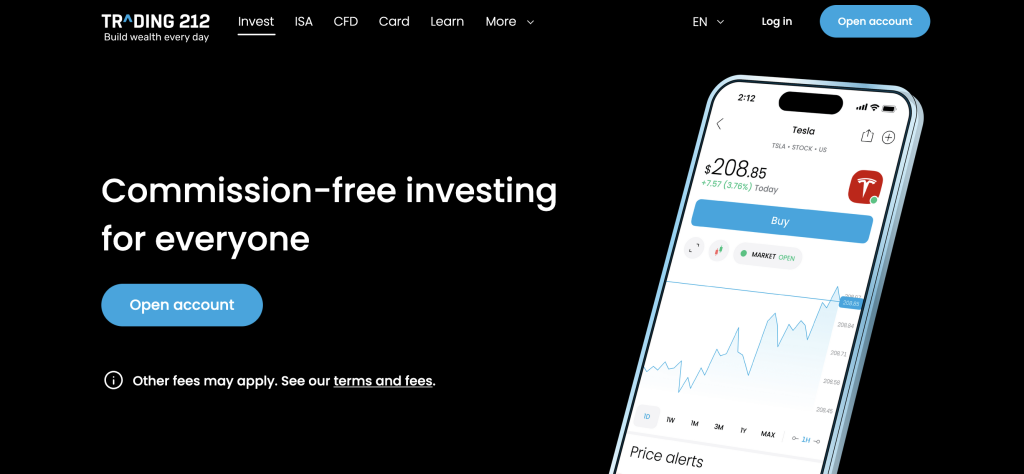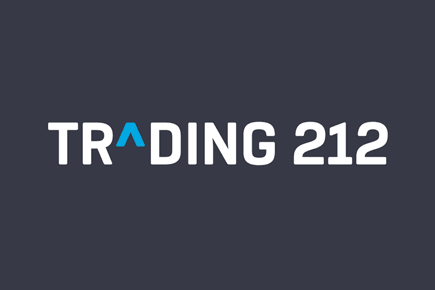When it comes to investing your hard-earned money, the first question that often comes to mind is, “Is this platform safe?” If you’re considering Trading 212, you’re not alone. This popular trading app has gained significant traction among beginner and experienced traders alike, thanks to its zero-commission model and user-friendly interface. But with the rise of online scams and unreliable brokers, it’s natural to question whether Trading 212 is genuinely secure.
What is Trading 212

Trading 212 is a fintech company that offers commission-free trading of stocks, ETFs, forex, commodities, and Contracts for Difference (CFDs). Founded in 2004, it initially operated in Bulgaria before expanding across Europe and the UK. Today, Trading 212 has millions of users globally, with a strong presence in the UK and the European Economic Area (EEA).
The platform offers two main account types:
- Trading 212 Invest: For buying real stocks and ETFs without commissions.
- Trading 212 CFD: For trading leveraged products like forex, commodities, and indices.
- Trading 212 ISA: A tax-efficient investment account available for UK residents.
Its intuitive mobile app, coupled with zero-commission trading, has made it especially popular among new investors looking to dip their toes into the financial markets.
But while its features are appealing, the real question remains: Is it safe to trust Trading 212 with your money?
Introduction: My Personal Journey with Trading 212
When I first ventured into the world of online trading, I had one burning question: “Is this platform safe?” The internet is flooded with trading apps promising quick profits, zero commissions, and advanced features. But with so many scams and unreliable brokers lurking around, it’s natural to be cautious.
That’s how I discovered Trading 212.
Fast forward to today, after months of trading stocks, ETFs, and even trying out CFDs, I’ve experienced the highs of profitable trades, the frustrations of market dips, and the satisfaction of withdrawing real money.
In this detailed guide, I’ll walk you through my personal trading journey with Trading 212—sharing everything from my first deposit to my latest withdrawal. I’ll cover:
- Is Trading 212 safe?
- How did I make profits?
- Was withdrawing money hassle-free?
- What are the platform’s strengths and weaknesses?
This isn’t a generic review; it’s an honest account from someone who’s actually used the platform. Let’s dive in! 🚀
1. Getting Started with Trading 212: My First Impressions
I chose Trading 212 because it advertised zero-commission trading, which sounded like a great deal. The sign-up process was surprisingly smooth:
- Time to Register: Less than 10 minutes
- Verification: Required uploading a passport and a recent utility bill for address verification
- Approval Time: My account was verified within 24 hours—impressive compared to other brokers that can take days
What I Liked:
- The platform was clean and intuitive—no clutter, no confusing options
- The mobile app felt modern, fast, and easy to navigate
At this stage, everything felt legitimate, but I knew I needed to dig deeper before trusting them with my money.
2. Is Trading 212 Regulated? Why This Was a Deal-Breaker for Me
Before making my first deposit, I asked the most critical question:
“Is Trading 212 regulated by any reputable financial authority?”
✅ Here’s What I Found:
- Regulated by the Financial Conduct Authority (FCA) in the UK:
Trading 212 UK Ltd is authorized under license number 609146. The FCA is known for its strict regulatory standards, which immediately boosted my confidence. - Licensed by the Financial Supervision Commission (FSC) in Bulgaria:
For EU clients, Trading 212 operates under MiFID II regulations, ensuring strong investor protection.
Why This Matters:
- Segregation of Funds: Client money (including mine) is kept separate from Trading 212’s business funds.
- Investor Compensation Scheme (FSCS): UK clients are protected up to £85,000 if the company goes bankrupt.
Knowing this, I felt reassured enough to move forward and fund my account.
3. Making My First Deposit: Was It Secure?
I decided to start small—£500—to test the waters. Trading 212 supports multiple deposit methods:
- Bank Transfer (my preferred choice)
- Debit/Credit Card
- Apple Pay & Google Pay
- Skrill and PayPal (depending on your region)
My Experience:
- Security: The website uses SSL encryption, protecting my personal and banking information.
- Transaction Speed: Card payments were instant; bank transfers took about 1 day.
- Confirmation: Immediate email confirmation after the deposit—this level of transparency was reassuring.
Tip: If you’re impatient like me, debit card deposits are the fastest option.
4. My First Trade: Entering the Market with Trading 212
With £500 sitting in my account, it was time to place my first trade. I decided to buy 5 shares of Apple (AAPL) at around £120 per share.
Placing the Trade:
- The interface made it incredibly easy:
Search for Apple → Click “Buy” → Enter the amount → Confirm - I could invest in fractional shares, meaning I didn’t need hundreds of pounds to buy expensive stocks like Amazon or Tesla.
My First Profit:
Within a few weeks, Apple’s stock price rose to £135 per share, netting me around £75 in profits. It wasn’t life-changing, but it felt amazing to see real gains.
5. My Trading Strategy: How I Made Consistent Profits
After my first successful trade, I wanted to build a strategy. Here’s what worked for me:
📈 1. Diversification:
I didn’t put all my eggs in one basket. I spread my investments across:
- Tech Stocks: Apple, Microsoft, Tesla
- Healthcare: Pfizer, Johnson & Johnson
- ETFs: S&P 500 index funds for long-term stability
🔄 2. Swing Trading:
I’d buy stocks and hold them for days or weeks to capture short-term price movements. This approach allowed me to profit from market trends without the stress of day trading.
⚡ 3. Experimenting with CFDs (High Risk!):
I dipped my toes into CFD trading to experience leverage. While it’s riskier, I limited my exposure to small amounts.
- Best trade: A quick £50 gain on a leveraged S&P 500 CFD
- Worst trade: Lost £30 in minutes due to market volatility
Lessons Learned:
- CFDs are exciting but risky. If you’re new, start small.
- Long-term investing in stable companies provided the most consistent returns.
6. Withdrawing My Profits: Was It Easy?
After growing my portfolio from £500 to £850, it was time to see if withdrawing profits was hassle-free.
💸 Withdrawal Process:
- Requested: £300 withdrawal via bank transfer
- Processing Time: Took 2 business days to hit my account
- Fees: None. Trading 212 doesn’t charge for withdrawals (a huge plus compared to some brokers)
My Honest Experience:
- The first withdrawal took slightly longer due to security checks, but subsequent withdrawals were faster.
- I appreciated the transparency—I received emails at each step of the process.
Tip: To avoid delays, make sure your withdrawal method matches your deposit method.
7. Is My Money Safe with Trading 212? A Closer Look
After several months of trading, I’ve seen firsthand how Trading 212 protects user funds.
🔐 Fund Protection Features:
- Segregated Client Accounts:
My money is held separately from the company’s operational funds, reducing the risk of misuse. - Tier-1 Banks:
Trading 212 holds client funds with reputable banks, adding an extra layer of security. - Negative Balance Protection:
Even during volatile markets, I couldn’t lose more than what I deposited—a lifesaver when trading CFDs.
My Test:
During a major market dip, my CFD positions took a hit. Despite the volatility, my losses never exceeded my account balance, thanks to negative balance protection.
8. How Does Trading 212 Make Money? Is There a Catch?
This was one of my biggest questions:
“If trading is commission-free, how do they stay profitable?”
💼 Trading 212’s Revenue Streams:
| Revenue Stream | My Experience |
|---|---|
| Spreads | The small difference between buy and sell prices. This is how most brokers earn without charging commissions. |
| Currency Conversion Fee (0.15%) | I paid this when buying US stocks with GBP. It’s small but noticeable over time. |
| CFD Overnight Fees | When holding leveraged CFD positions overnight, small fees apply. |
| Interest on Idle Funds | They earn interest on unused client balances (doesn’t affect my profits directly). |
Any Hidden Fees?
No hidden fees, but if you’re not careful, overnight fees on CFDs can add up quickly. For long-term investors, sticking to the Invest account is more cost-effective.
9. Pros & Cons of Trading 212 (Based on Real Experience)
✅ Pros & ❌ Cons Table:
| ✅ Pros | ❌ Cons |
|---|---|
| Regulated by FCA & FSC | Occasional withdrawal delays (during peak times) |
| Commission-free stock trading | Customer support can be slow during busy periods |
| Fast and easy account setup | High CFD overnight fees if held long-term |
| Negative balance protection (CFDs) | Limited advanced tools for professional traders |
| No hidden fees on deposits/withdrawals | No crypto trading options (as of now) |
| Fractional shares for small investors | Limited educational resources compared to competitors |
10. Customer Support: My Honest Review
I reached out to Trading 212’s customer support twice:
- Withdrawal Inquiry: Took about 24 hours to get a response.
- CFD Fee Clarification: Live chat was responsive but had a slight wait during peak hours.
Support Channels:
- Email: Reliable but not the fastest
- Live Chat: Available but can get busy during high market activity
- Help Center: Extensive FAQs for common issues
Rating: ⭐⭐⭐⭐☆ (4/5)
While not perfect, support was polite, knowledgeable, and resolved my issues effectively.
11. Comparing Trading 212 to Other Platforms I’ve Tried
I’ve also traded with eToro and Plus500, so here’s how Trading 212 stacks up:
| Feature | Trading 212 | eToro | Plus500 |
|---|---|---|---|
| Regulation | FCA, FSC | FCA, CySEC | FCA, CySEC |
| Commission-Free Trading | ✅ (Stocks/ETFs) | ✅ (Limited) | ❌ |
| Fund Protection | Segregated + FSCS (£85,000) | Similar protection | Similar protection |
| Ease of Use | Beginner-friendly | Social trading features | Better for advanced traders |
| Customer Support | Good but slow sometimes | Faster live chat | Consistently responsive |
12. Final Verdict: Is Trading 212 Safe?
After months of trading, here’s my honest answer:
YES, Trading 212 is safe.
- Regulation: Fully regulated by the FCA (UK) and FSC (EU)
- Fund Protection: Segregated client accounts and FSCS coverage up to £85,000
- Data Security: Strong encryption and two-factor authentication (2FA)
- Transparent Business Model: No hidden fees, clear revenue structure
Would I recommend Trading 212? Absolutely.
It’s perfect for beginners, cost-effective for long-term investors, and secure enough to handle serious investments. Just be cautious with leveraged CFDs—they carry higher risks.
13. FAQs: Quick Answers Based on My Experience
Q1: Is Trading 212 regulated?
Yes, by the FCA in the UK and FSC in Bulgaria.
Q2: Are my funds safe if Trading 212 goes bankrupt?
Yes, up to £85,000 is protected under the FSCS (for UK clients).
Q3: How fast are withdrawals?
Typically 1–2 business days, depending on the withdrawal method.
Q4: Is Trading 212 good for beginners?
Yes, the interface is user-friendly, and zero commissions make it perfect for new traders.
Q5: Are there any hidden fees?
No hidden fees, but watch out for currency conversion charges and overnight CFD fees.

